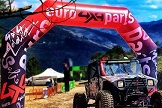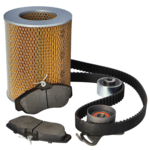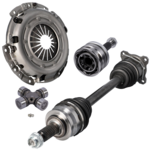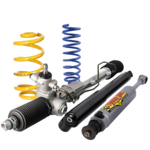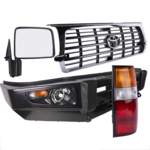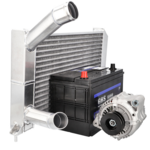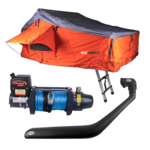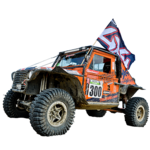What is a rim?
The rim actually comprises 2 parts :
- the rim disc which is the central section that attaches to the hub via the wheel nuts
- The rim is the outer circle profiled in one or two parts and is attached perpendicular to the rim disc.
Together, they are commonly described simply as the rim or wheel.
Why is offset important?
Wheel offset has a direct effect on the suspension and handling of your 4x4. It has an impact on the turning circle and the distance between the tyres and the wings. On some models, there is very little space around the axle and a slight change in offset can be a source of friction between the wheels and the elements of the bodywork, especially if the 4x4 is heavily loaded.
A 5mm difference as compared to the original factory spec wheels can be considered acceptable.
It doesn't matter whether you prefer alloy or steel wheels. You just have to take into account that because steel wheels are narrower than alloys it will be necessary to make an offset correction for larger wheels.
We've put together this tutorial to help you choose the correct offset to suit your 4x4.
Let's start with some definitions...
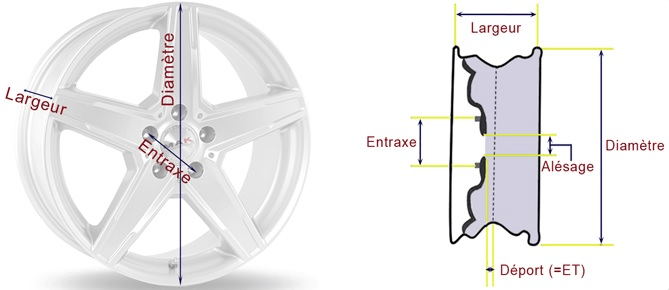
Centre bore
The centre bore is the central diameter rim where the rim disc is in contact with the hub. When this is used to centralise the rim on the hub the rim is described as hubcentric.
Bolt circle diameter
Bolt circle diameter (or bolt pattern) is the diameter of an imaginary circle formed by the centers of the wheel nuts.

Dimensions
Dimensions are always described in inches:
1" = 25.4mm
Offset
The offset of a wheel is the distance from its hub mounting surface to the centerline of the wheel. The centerline is an imaginary axis separating the wheel into two equal parts across the width.
- The offset is said to be positive if the mounting surface is on the outside of the axis.
- The offset is said to be negative if the mounting surface is on the inside of the axis.
To find the offset of a wheel:
Measure the rear side A and deduct half of the overall width (B/2) of the rim.
- If the result is (+), the offset is positive.
- If the result is (-), the offset is negative.
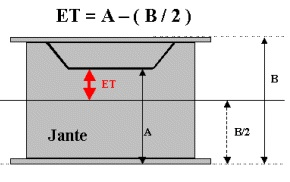
Different types of offset
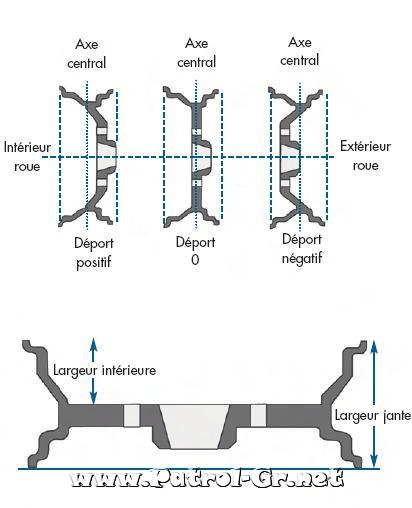
You can see that it's not just the offset that determines the position of the wheel in relation to the body of the 4x4. The width of the wheel also has a role to play.
As shown in the example below, for the same 30-millimeter offset, a 9-inch rim will protrude out of the wheel arch much more than the 6-inch rim.
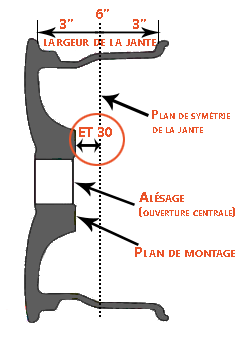
Important
When changing the size of tires, you must not vary the diameter of the tire by more than 3%, or the circumference by more than 30 mm.
This is why when mounting a low profile style tire, the diameter of the wheel increases but not that of the tire.
Avoid fitting tires whose width is not matched to the power of your vehicle.
Do not forget: the width and diameter are calculated in relation to the tire bead on the rim. To obtain the overall width of the wheel, add approximately 24 mm (width of the two wheel edges) to the width measured at the beed.
Choose the right steel or alloy rims for your 4x4:
Do it yourself, you'll be even prouder! To help you out, Euro4x4parts shares its know-how and expertise in mechanics through 4X4XPERT: new products, technical sheets, and personalized tutorials... You've got the keys!
And because we also learn from your experiences, your feedback is essential. Let us know your thoughts and suggestions by email: 4x4xpert@euro4x4parts.com
Check out our complete catalogue of 4x4 parts and accessories!
All the photos in our articles are taken on authorized roads or tracks, private land, or during supervised competitions. Let's all do our part to preserve the environment!
Please note: Euro4x4parts publishes this information to help its customers, but cannot be held responsible for the advice given here and their consequences when used.
